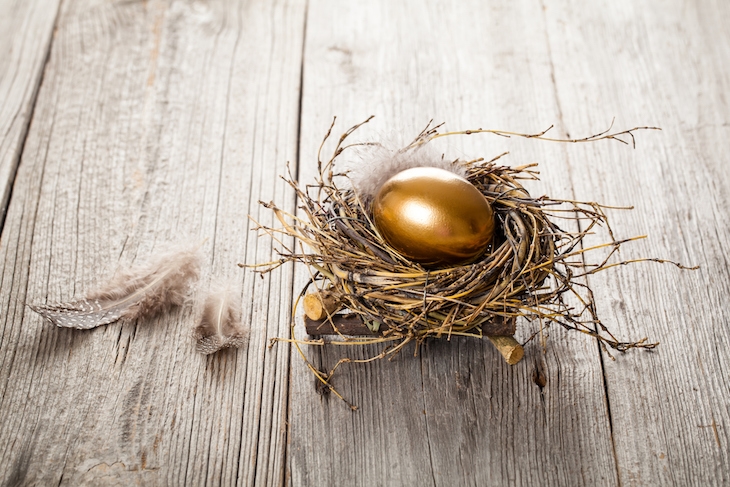Hide is a £20 million restaurant at the Green Park end of Piccadilly, on the three lower floors of a brutalist box by Clarges Street. From outside it looks like an illustration from a storybook: people eating while illuminated in glass boxes. It is a restaurant to be looked at from outside, a restaurant with no skin.
Hide is the fourth restaurant from Ollie Dabbous, who is the most talented British chef of his generation, even if you think that dowsing food in flowers is very irritating. Dabbous, which opened in 2012, offered fairy food near Tottenham Court Road, which needs it badly: strange decapitated eggs, a carpet of flowers, nuts, hay. It was glintingly metaphorically, instantly famous, then it closed. Now, with a bag of Russian gold, Dabbous has made Hide, with Hedonism Wines. The food and the gold may be spiritually incongruent but it works in Shoreditch. We shall see.
You enter through a tall door of rough wood; I am fairly certain that Dabbous’s essential inspiration is Enid Blyton’s The Magic Faraway Tree but that is normal at this stage of empire. There is a bar in the cellar (Hide Below), an informal restaurant — such things are relative — on the ground floor (Hide Ground), and a showcase restaurant above (Hide Above), invented to collect Michelin stars, as if with a restaurant-net. For Dabbous they probably would be real stars, shrunken and stored in a freezer disguised as a glade.
Hide is wood, as if the diner is trapped in a sophisticated, knowing tree. The staircase is curling, immense and bespoke. The tables are round and widely spaced. Leaves are etched onto walls; the lights are half-eggs, broken, brittle and painted gold inside. The view is the Piccadilly bus lane. The female staff are dressed as — this is the closest I can get — idealised, and very clean, medieval Saxons. They are wearing smocks. The men, of course, are dressed normally.
A smocked person opens a drawer in the table and shows me the iPhone charger inside. Ah, 21st-century Mayfair! Another brings a chair for my handbag, which doesn’t deserve it, and can’t thank her. We eat the tasting menu — there is nothing else. This is high-stakes dining because the food is made, quite simply, of Ollie Dabbous’s dreams. The flesh itself is incidental. A tasting menu is memoir, good or bad, oblivious or deliberate. It is a very intimate thing to eat; quite often much too intimate. I have vomited after eating tasting menus (Per Se), screamed (Chef’s Table at Brooklyn Fare), or simply fretted (Eleven Madison Park). I have left restaurants thinking the chef hates food, hates his mother, hates himself.
First, raw and pickled vegetables, a mushroom broth, and charcuterie (goose and pork) wound on a feather and a bone made of china. It is insanely beautiful for raw and picked vegetables and charcuterie, and very strange. There is the famous egg in hay — egg removed, cooked with mushrooms, cream and chives, then recanted into the shell — a piece of king crab, and a perfect, no, transcendent lamb chop. Ice cream sits on an ice ingot with fruit inside; then a glorious Religieuse, a pastry which looks like a tiny gold and blue theatre; then burnt liquorice marshmallow on a stick with ice cream inside. We loll, ecstatic, as the 88 from Clapham Common drives past.
If Eleven Madison Park is, according to the World’s 50 Best Restaurants list, which I despise but can’t stop mentioning, now the best restaurant on earth, then what is Hide Above? Better — if you want to eat dreams for £95 a head. Similar chefs serve only their neurotic vanity, but Dabbous is a happier man.







Comments